
1. A Word About the Museums
You’re now inside one of the largest fortified structures in Europe, and quite possibly the most beautiful in Italy. This is Milan’s most important cultural complex. Read more
Tour
7,2 km
3h
23 audios
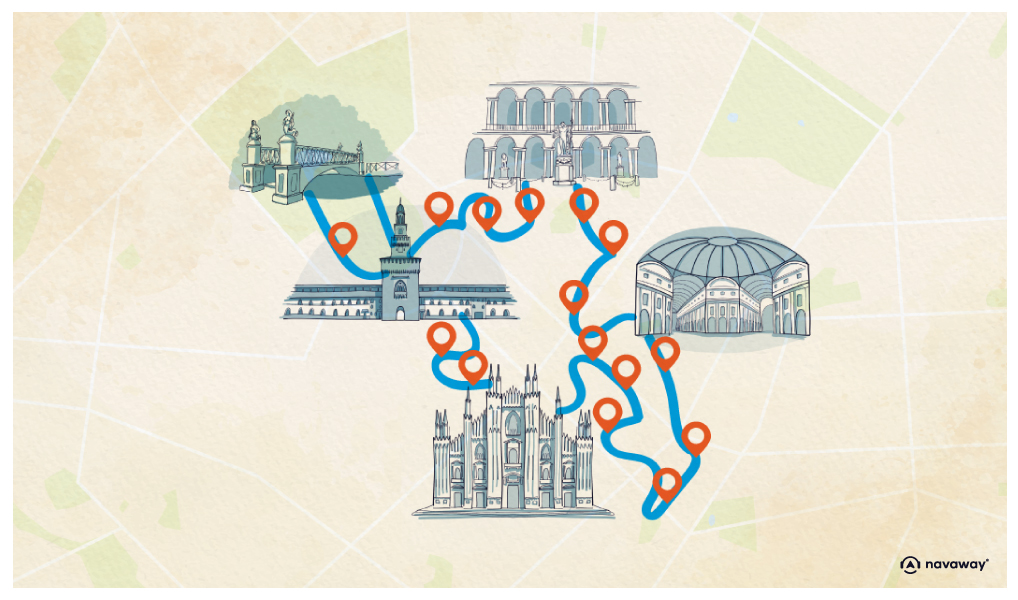
Text version
Welcome to Milan, the capital of fashion, design… and so much more. Behind its elegant façades and the bustle of a city always on the move, Milan hides a true love of the good life, a colourful history, and a strong, distinctive character. You’re about to explore a city that has been conquered, destroyed, rebuilt, reinvented… and that still, to this day, captivates the world. While the city impresses with its majestic Duomo, prestigious museums, and imposing fortress, it charms just as much with its bohemian neighbourhoods, medieval squares, and well-kept secrets. But more than anything, Milan is a feeling, a certain magic that fills the streets at aperitivo time, when the dolce vita spills outside and everyone gathers over a drink. So keep your eyes open, your ears tuned in, and let yourself be swept along. This 7-kilometre route will take you through every side of Milan, from the famous landmarks to the hidden surprises.

You’re now inside one of the largest fortified structures in Europe, and quite possibly the most beautiful in Italy. This is Milan’s most important cultural complex. Read more
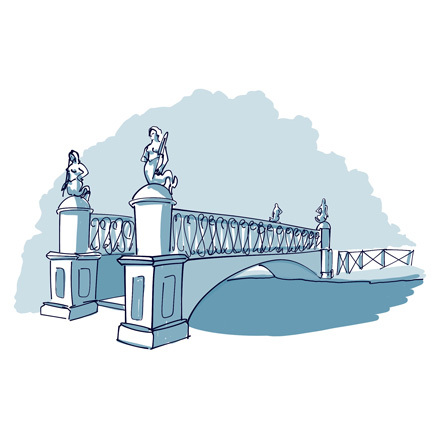
After so much culture, nothing beats a breath of fresh air. The beautiful Parco Sempione, designed in the English style, offers 40 hectares of greenery where you can stroll and take a break from the city. Read more
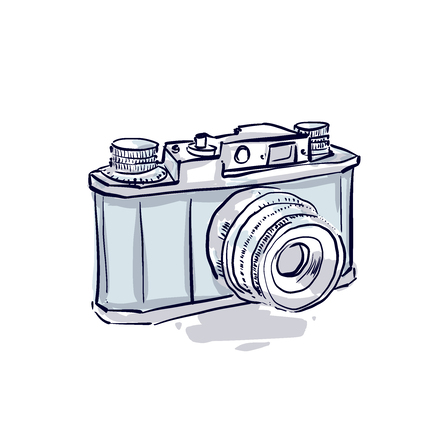
The elegant triumphal arch you see on the other side of the park is the Arco della Pace, the Arch of Peace. If it reminds you of its Parisian counterpart, that’s no coincidence: it was built in 1807 during the Napoleonic era. Read more
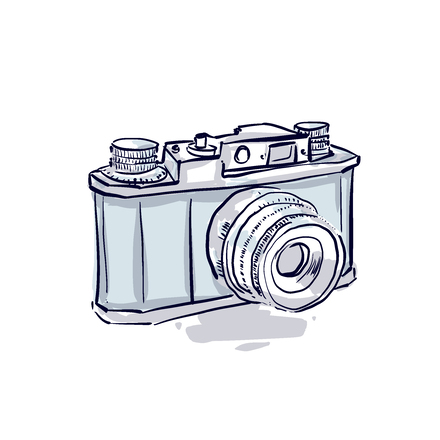
Via Dante, the street you’re walking along now, links the Sforza Castle to Piazza del Duomo. It was opened in 1888 as a direct thoroughfare to the castle, no wonder it’s one of Milan’s liveliest streets. Read more
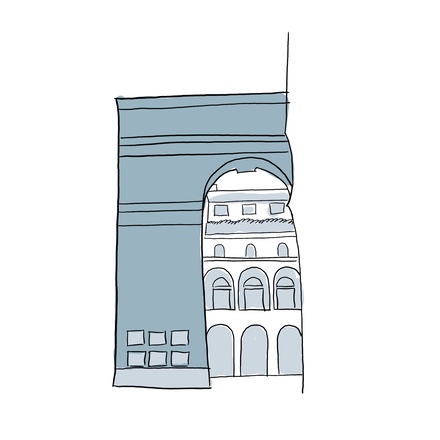
The remains of Milan’s Roman past may be discreet, but the city was once a major Roman settlement. Originally inhabited by the Insubrian Gauls, it was conquered by the Romans in 222 BC. Around 50 BC, the first permanent public buildings began to appear, including the theatre you see on your left. Read more
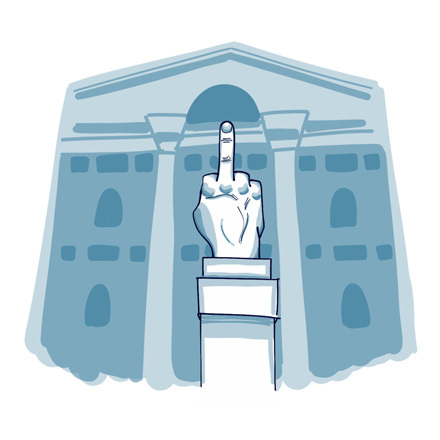
Pause for a moment in Milan’s financial district to take in this bold and surprising statue. It was gifted by the famous contemporary artist Maurizio Cattelan, on one condition: it had to face the Stock Exchange. Read more
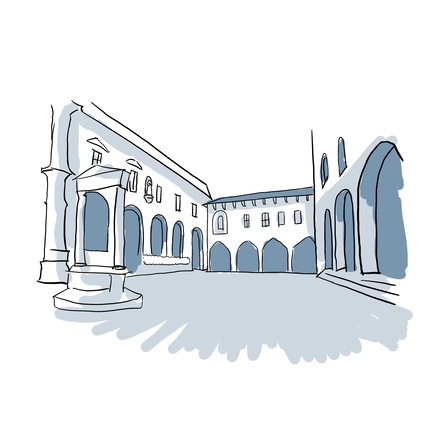
Back in the Middle Ages, this was the heart of the city. Piazza Mercanti was Milan’s commercial and governmental hub. Take a look around and listen to the stories these buildings could tell. Read more
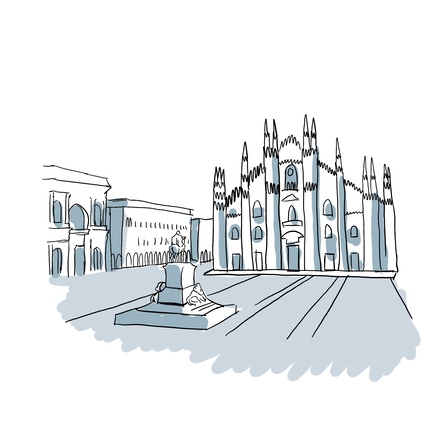
You can feel it, you can tell, you’re standing in Milan’s central square, the very heart of the city, where everything begins. This is where locals gather to mark big occasions. Spanning a vast 17,000 square metres, it’s the perfect stage to step back and take in, jaw dropped, the towering cathedral that dominates it all. Read more
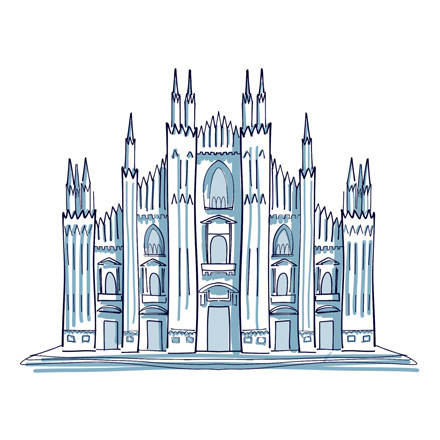
It’s hard not to be awestruck, you’re face to face with one of the largest and tallest cathedrals in the world! Only St. Peter’s Basilica in Rome and Seville Cathedral surpass it in size. Read more
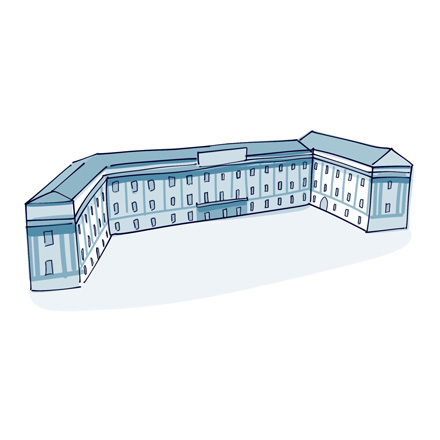
You’re now looking at the Royal Palace, built on the orders of Maria Theresa of Austria, back when the Duchy of Milan was under Habsburg rule. Read more
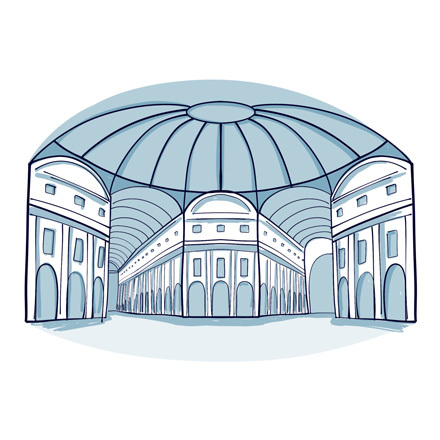
Stepping into what many consider the most beautiful gallery in Europe is nothing short of spectacular, and your eyes are instantly drawn to its magnificent, sweeping glass roof. Read more
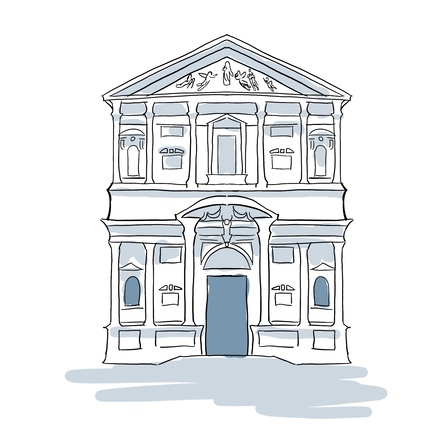
You’re now in Piazza San Fedele, facing the Jesuit church of the same name. This was the Jesuits’ first residence in Milan, built in the late 16th century and still an important parish centre today. It’s also listed as an Italian cultural heritage site. Read more
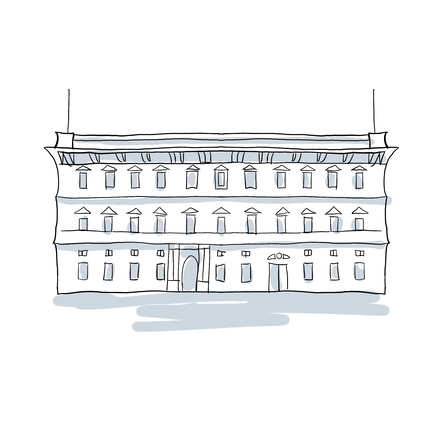
You’re now standing in front of Palazzo Marino, a remarkable 15th-century mansion built for a wealthy family of Genoese bankers. It became state property in 1781 and today serves as Milan’s City Hall. Read more
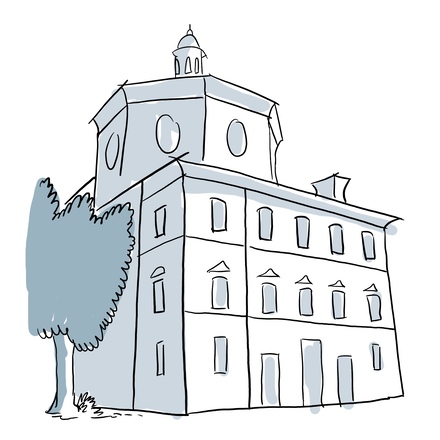
Another church, you might be thinking. But trust me, I’m not trying to make you visit every church in Milan. Step into the small building just to the left of the main church, and you’ll see it’s actually an ossuary. Read more
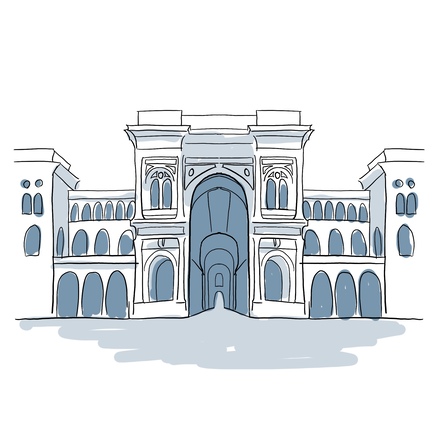
Au croisement des deux galeries se trouve ce que l’on appelle, vous devinez pourquoi, l’octogone. Surplombé par une impressionnante coupole et entouré des allégories des 4 continents, ce carrefour est une vraie merveille ! Read more
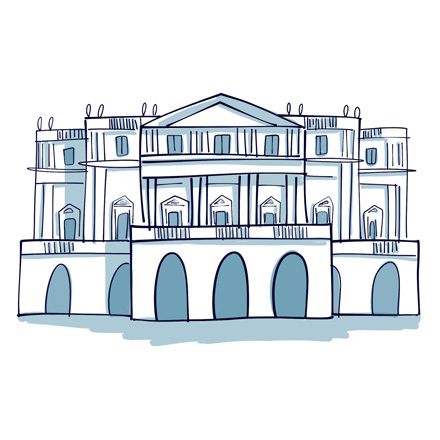
Don’t judge a book by its cover, that saying couldn’t be truer here. Yes, you might feel a twinge of disappointment. You’ve been told you’re about to see the most important Italian-style opera house in the world, and yet La Scala’s façade doesn’t quite match the grandeur you imagined. Read more
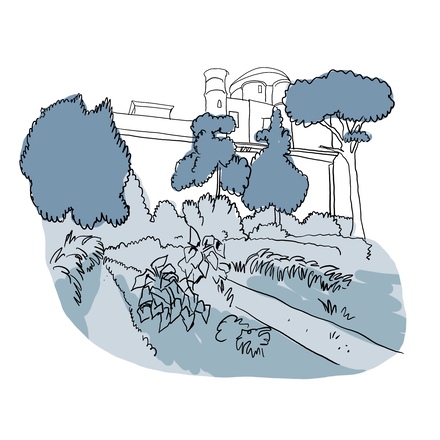
A true oasis in the heart of Milan, this botanical garden is a delightful surprise that leads you straight to the famous Brera Palace and its renowned art gallery, the Pinacoteca di Brera. Read more
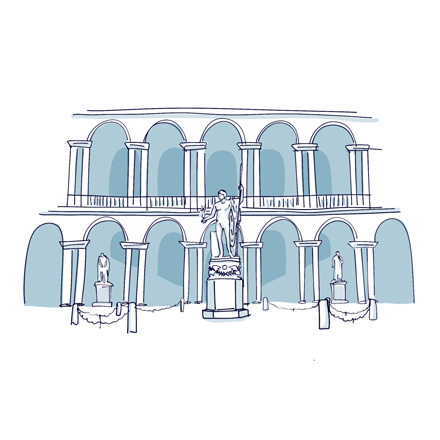
You’ve arrived at the famous Brera Palace, home to several major institutions. The Pinacoteca di Brera is one of Italy’s most important museums, ranking alongside the Uffizi Gallery in Florence and the Vatican Museums in Rome. Read more
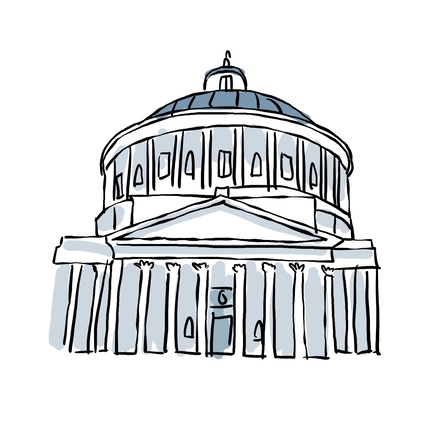
You’re walking along the main artery that links Piazza del Duomo to Piazza San Babila. This is Milan’s second pedestrian zone and the perfect place if you’re in the mood for a little shopping. Read more
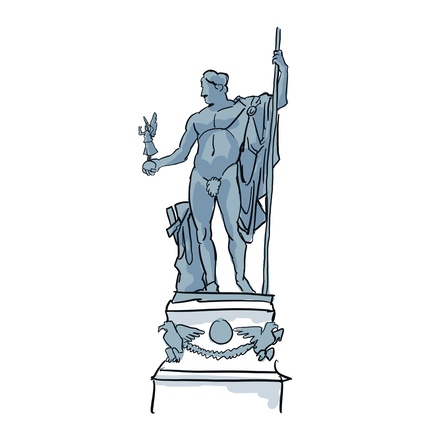
A quick word about the statue of Napoleon you see in the centre of the courtyard. Here, the Emperor is depicted as Mars the Peacemaker, unarmed, triumphant, and entirely nude, a work originally intended for a grand vestibule rather than an open square. Read more
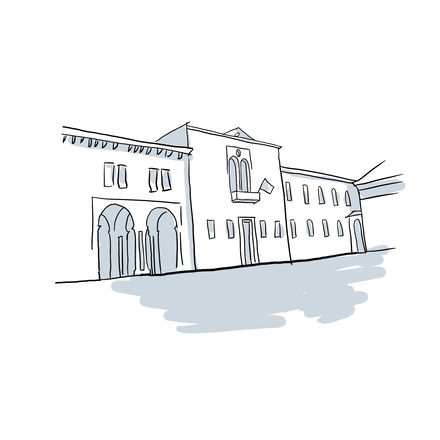
This beautiful corner building is the Bonacossa Palace, home to Milan’s Museum of Art and Science. The museum occupies the former San Vittore Monastery, founded in the 16th century. Read more
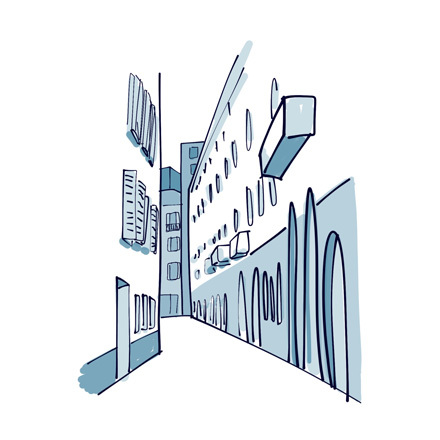
You’re in the heart of a bohemian, artistic, and picture-perfect neighbourhood, welcome to Brera. Here, cobblestone streets are lined with charming boutiques, bars, and restaurants. Read more
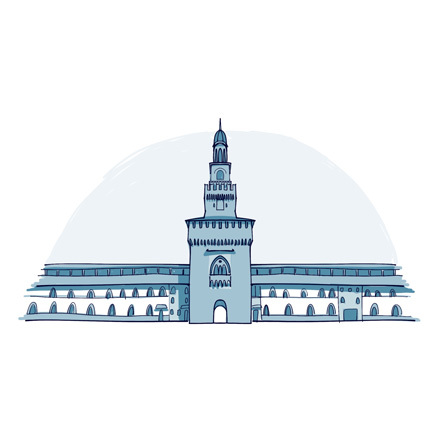
An iconic symbol of Milan, the Sforza Castle tells the city’s entire story in a single place. From its days as a fortress to its present life as a museum complex, it has witnessed centuries of foreign rule. Read more


Discover Milan with app
An interactive guide through the most beautiful streets, squares, and districts
23 fun audioguides full of historical facts, anecdotes, and legends
Marvel at the grandeur of the Duomo and take in breathtaking views of Milan from its terraces.
Even if you’re not a fashion expert, you probably know that Milan is the place to be for any self-respecting fashion lover. If you’re ready to splurge and be dressed by the best, head to the “Quadrilatero della Moda,” where the top Italian labels and leading international brands stand side by side.
Don’t miss the chance to see Leonardo da Vinci’s world-famous Last Supper in person at the Church of Santa Maria delle Grazie. Be aware that tickets are limited to protect
Milan’s vast Monumental Cemetery is another fascinating site to explore. Entry is free, though it’s closed on Mondays. This extraordinary open-air museum is filled with sculptures, mausoleums, and funerary art – truly grand in scale and style.
We also recommend wandering through the pedestrian streets of Corso Como and taking a stroll along the Navigli canals at aperitivo time.
And don’t forget to travel across the city like a local aboard one of Milan’s iconic orange trams.
Looking to escape Milan’s buzz for a day? The surrounding region is packed with treasures easily reached by train or car. Here are a few ideas for day trips to discover another side of Lombardy – and beyond!
Less than an hour by train from Milan, Lake Como awaits with its grand villas, terraced gardens, and charming villages. Stroll through Bellagio, take a boat to Varenna, or wander the streets of Como. The setting is magical, with shimmering waters framed by Alpine peaks.
Often overshadowed by Milan, Bergamo is well worth the trip. Its Città Alta, perched on a hill and encircled by UNESCO-listed Venetian walls, charms visitors with its medieval atmosphere. Ride the funicular up, linger in Piazza Vecchia, and enjoy sweeping views of the Alps.
Birthplace of Antonio Stradivari, Cremona is a dream for classical music lovers. Visit the Violin Museum, explore traditional luthier workshops still in operation, and soak up the serene charm of this beautiful riverside city on the Po.
About 40 km south of Milan, Pavia boasts a rich heritage. The Certosa di Pavia, a masterpiece of Lombard Gothic architecture, is worth the trip alone. The historic centre, with its medieval towers and lively student atmosphere, is a delight to explore.
A bit farther afield but still accessible by train or car, Lake Maggiore exudes elegance. Don’t miss the Borromean Islands, baroque jewels set on the water. The lakeside town of Stresa makes the perfect base for exploring.
Just outside Milan, Monza is famous for its Formula 1 circuit, but it offers much more. Its royal park – one of the largest in Europe – surrounds an opulent 18th-century villa, providing a perfect setting for a peaceful stroll in the green.
Explore the art, Alpine landscapes, and the enchanting lakes surrounding Milan.
200 audioguided tours for cities all around the world
DownloadOur rating
Budget
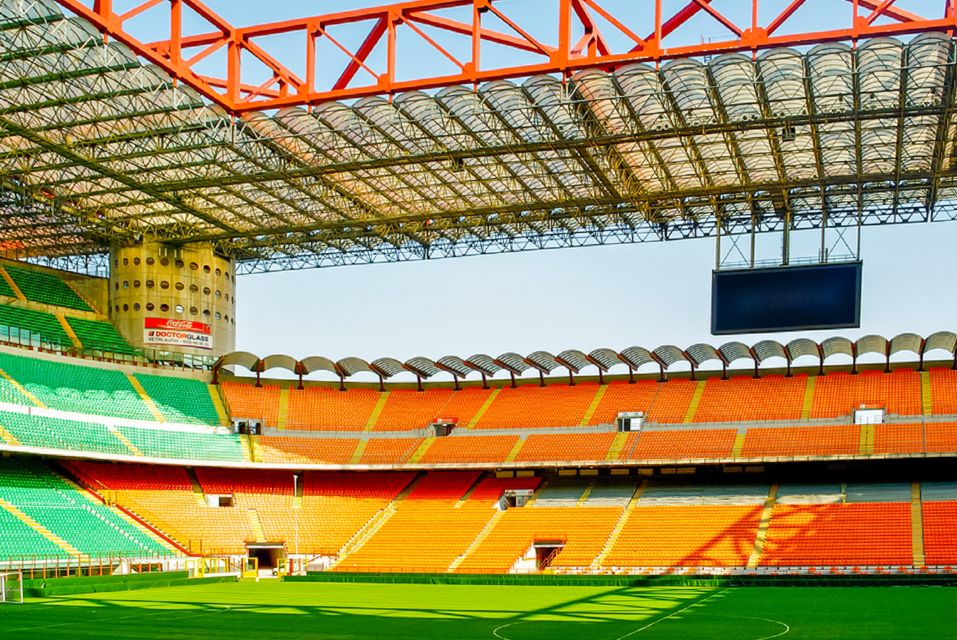
In Italy, football is a veritable religion, and probably even more so in Milan. The city is home to two world-renowned clubs: AC Milan and Inter Milan. Both teams share the same stadium. However, depending on which team is playing, the name of the stadium changes, hence the fact that it’s not mentioned above, so there’s no jealousy!
When AC Milan play at home, the stadium is called San Siro, the district in which the stadium is located. On the other hand, when Inter Milan play, the stadium is called Giuseppe-Meazza, after a former Italian player who was a double world champion in 1934 and 1938. Call it what you like, but….
Read More
Our rating
Budget
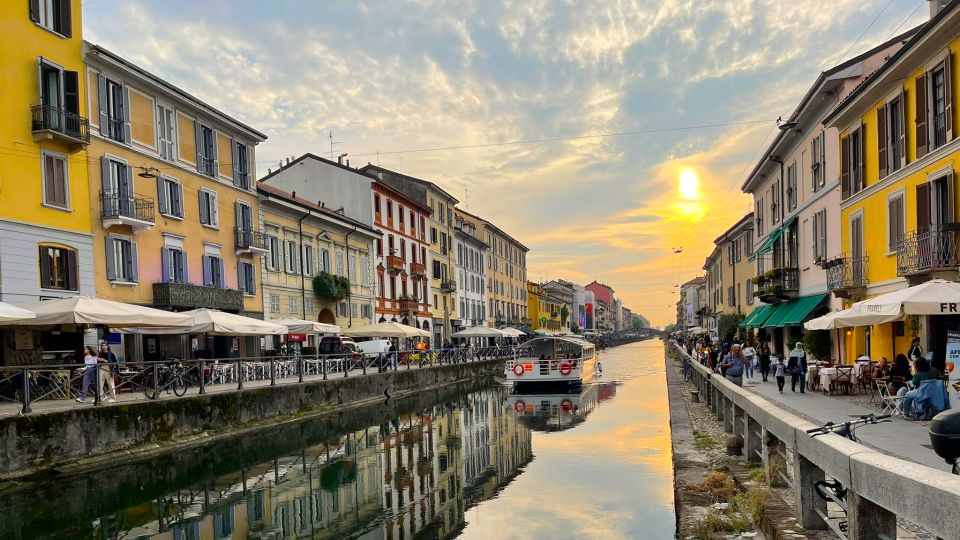
See Our Full Review
Our rating
Budget
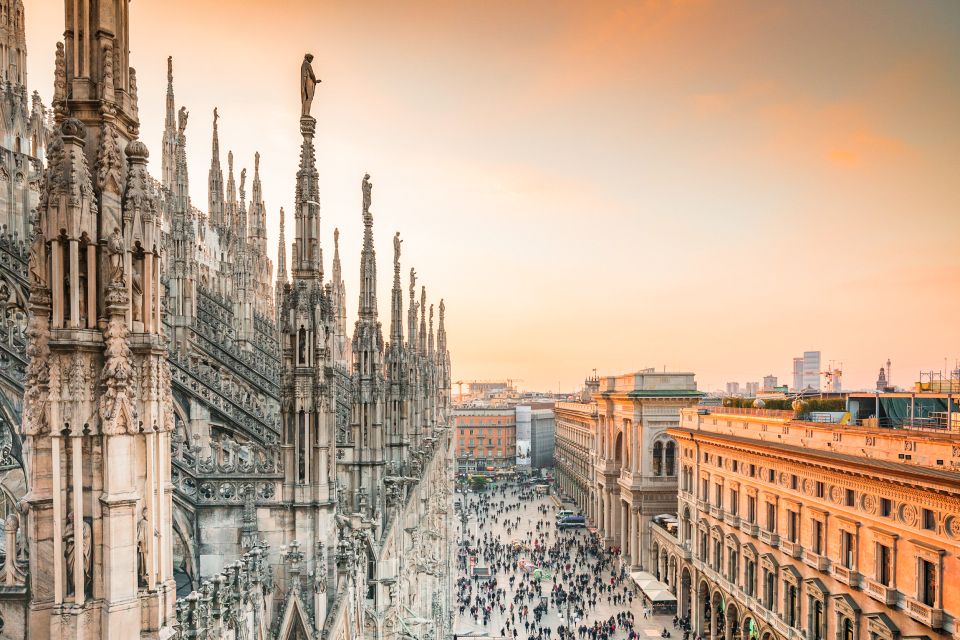
See Our Full Review
Our rating
Budget
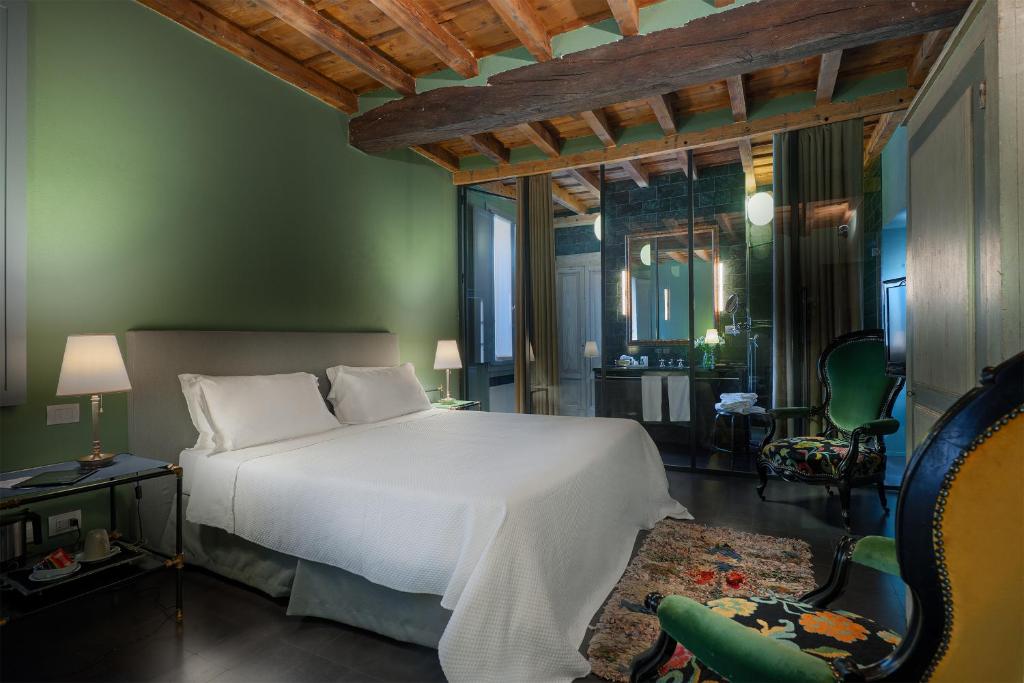
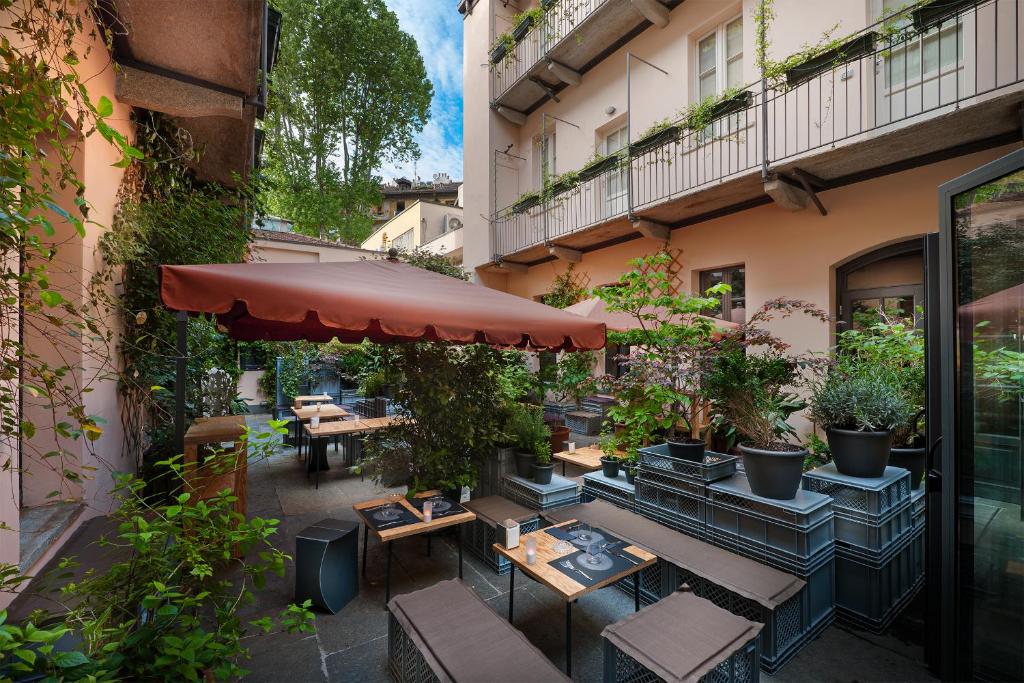
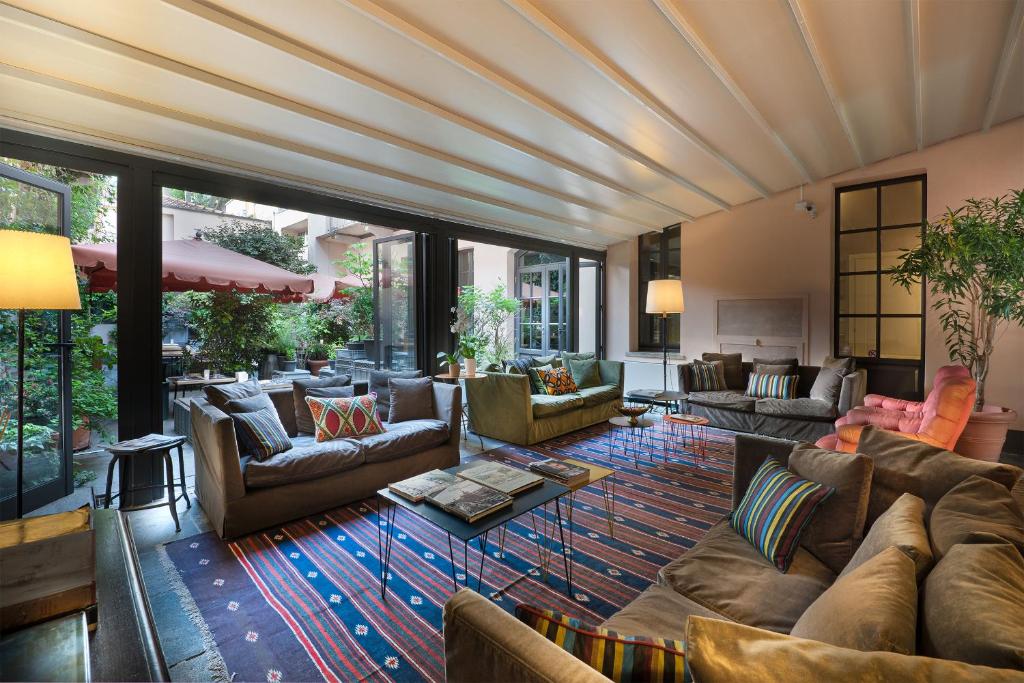
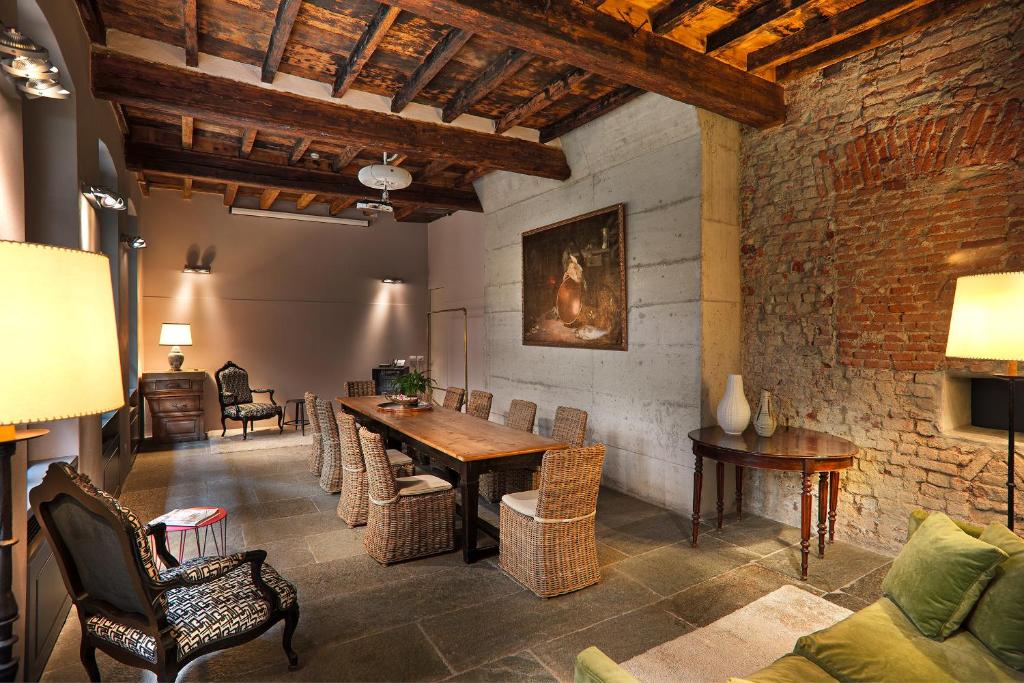
Description: Let’s end this list of hotels with class and sobriety with the Maison Borella. This very luxurious four-star hotel is located on the banks of the Navigli canal, offering an idyllic setting. The hotel includes…
Read More
Highlights:
Weak point:
Location: Alzaia Naviglio Grande 8, Navigli, 20144 Milan.
Our rating
Budget
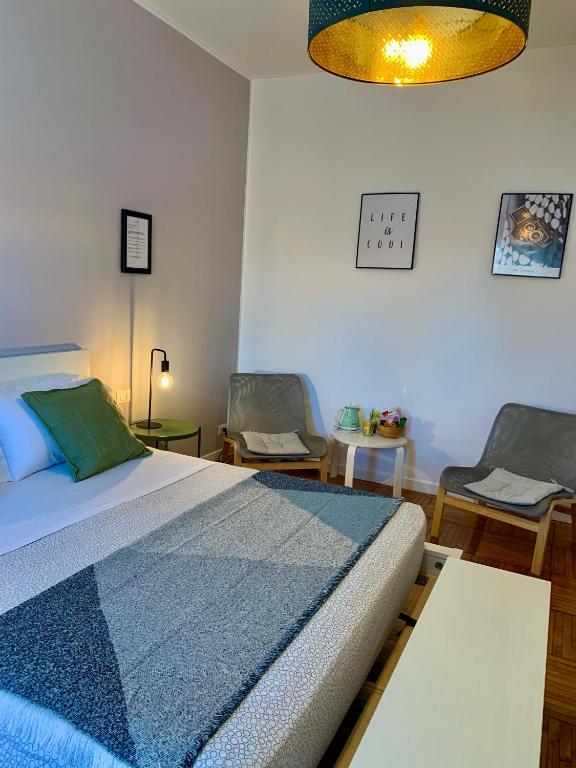
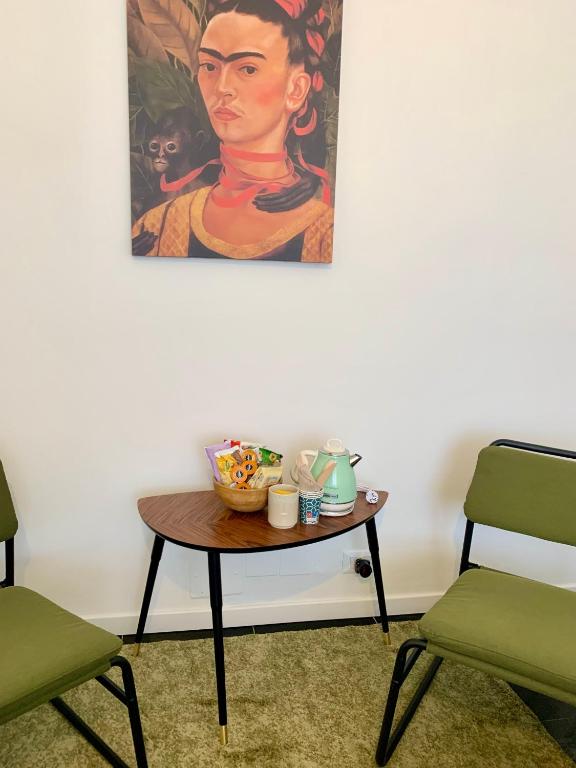
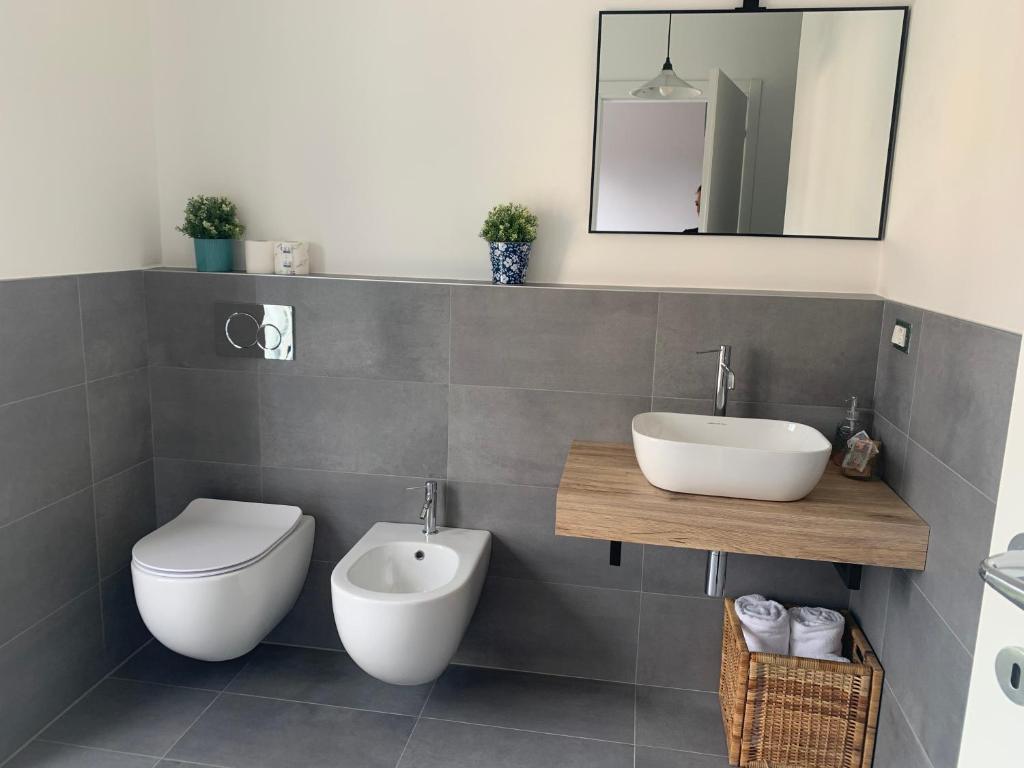
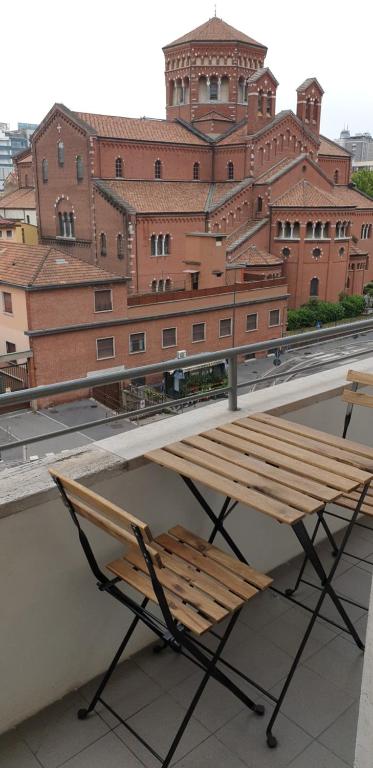
See Our Full Review
Our rating
Budget
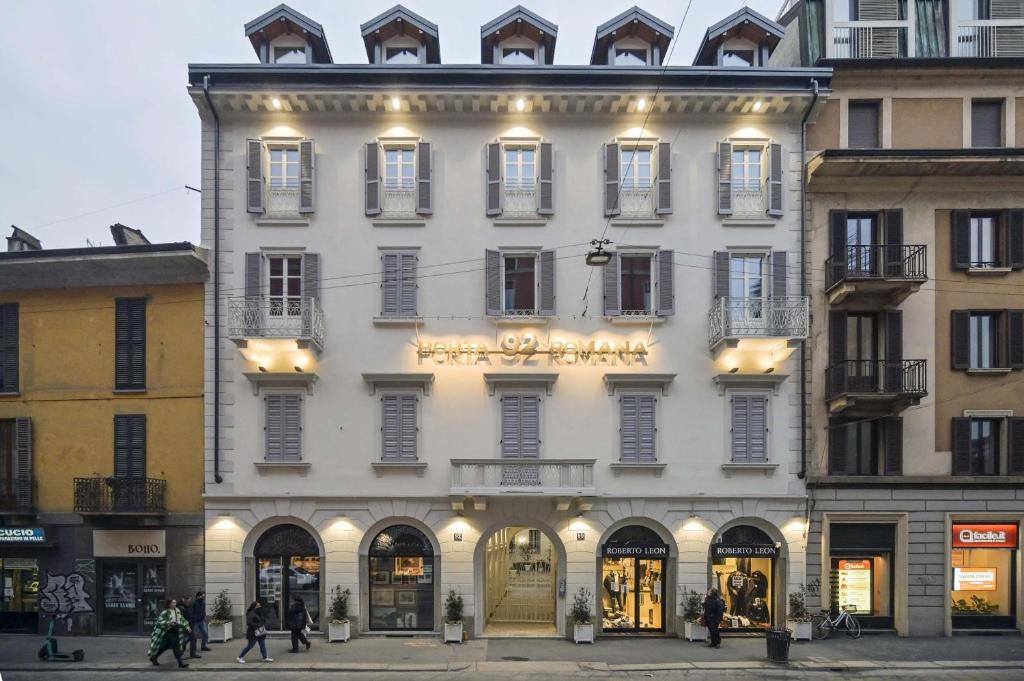
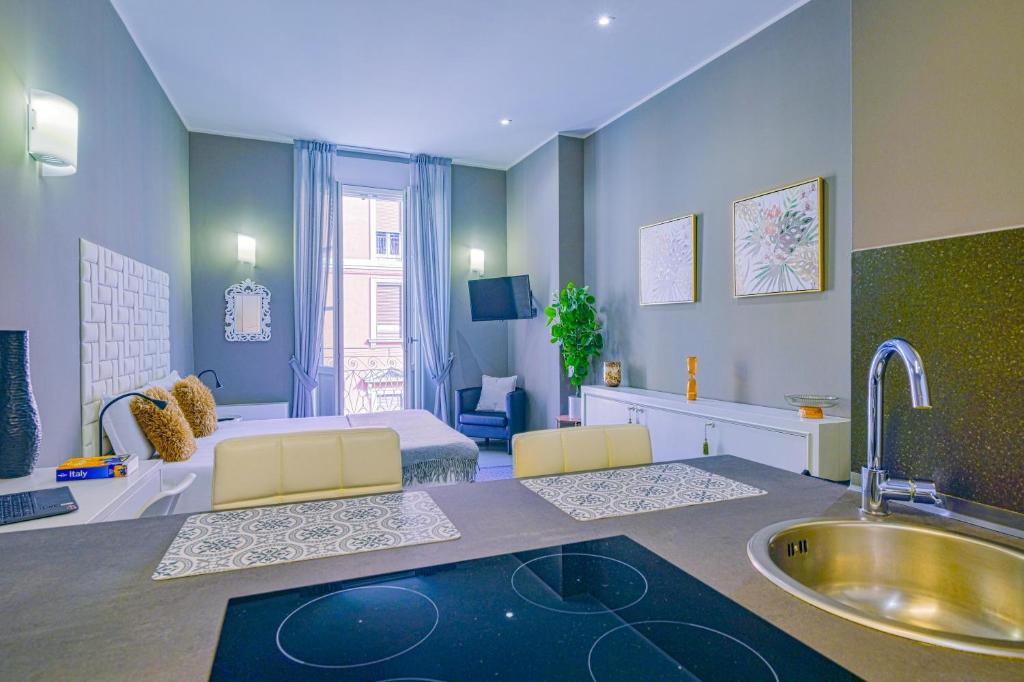
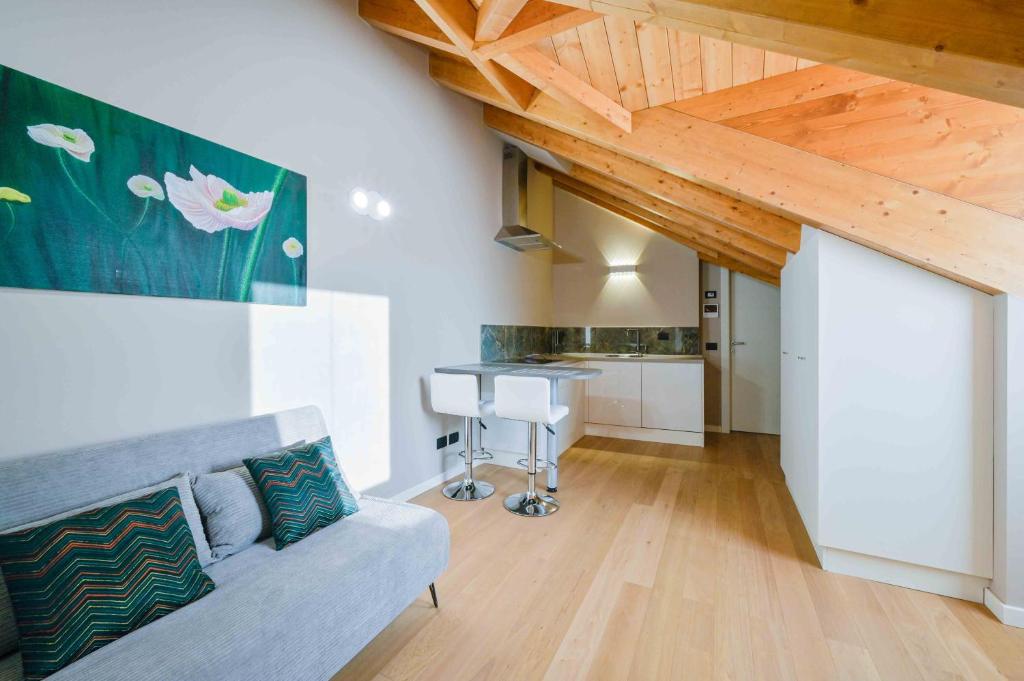
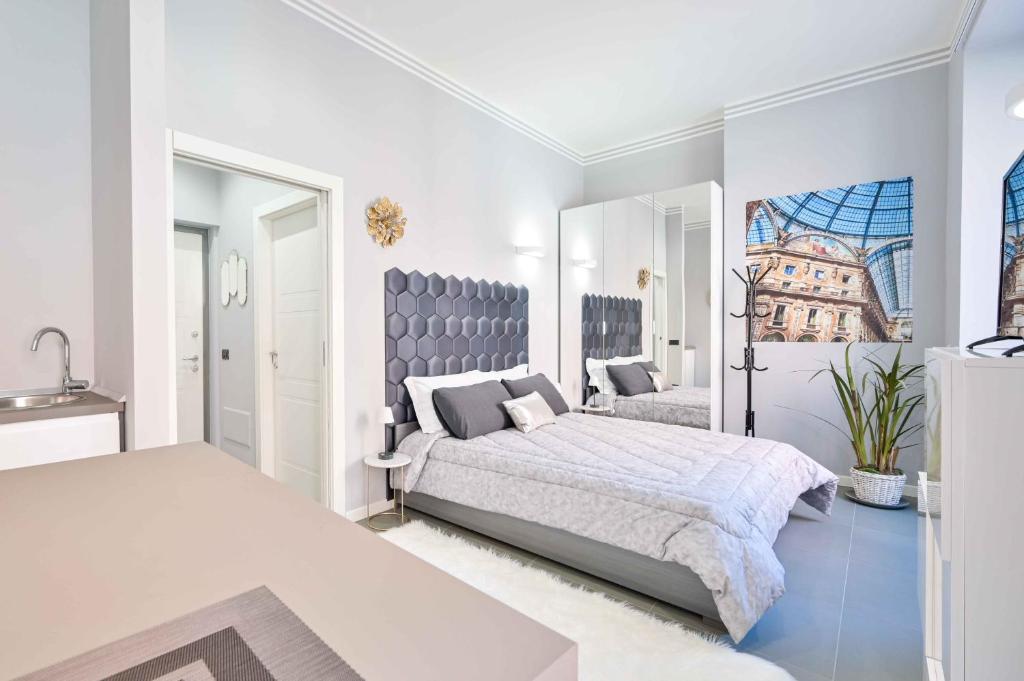
See Our Full Review
To explore Milan without any hassle, leave your car near your accommodation. It’s much easier to get around by public transport than by car. Milan has four metro lines—the longest metro network in Italy—covering the entire city. Alternatively, the tram is also a great option. Milan boasts one of the most extensive tram networks in the country, with 17 lines available for you to use.
Several neighborhoods in Milan are absolute must-sees during your stay. To start, the Centro Storico (historic center) is the heart of the Lombard capital and a true highlight. This is where you’ll find the Duomo Cathedral, the city’s most iconic landmark. Nearby stands the Galleria Vittorio Emanuele II, Milan’s historic and prestigious shopping arcade. For an equally charming setting, head north of the Duomo to the Brera district — a refined, bohemian neighborhood brimming with art galleries. After the 1950s, many artists settled here, transforming Brera into one of Milan’s most emblematic and inspiring areas.
Visiting Milan in a single day is quite a challenge, so you’ll need to make the most of your time to truly experience the city. Start your day in the Centro Storico with a visit to the magnificent Duomo Cathedral. Climb up to its rooftop terraces for a stunning panoramic view over the city. Next, head to the nearby Galleria Vittorio Emanuele II — another Milan landmark just steps away. Close to both is the Teatro alla Scala, an 18th-century opera house renowned worldwide for its exceptional performances.
After a busy morning, enjoy some local specialties at a traditional restaurant. In the afternoon, visit the impressive Sforza Castle, built in the 15th century by Duke Francesco Sforza. Right next to the fortress, you’ll find Parco Sempione — the perfect spot to relax in the shade and enjoy a bit of greenery, especially on warm days.
As evening approaches, take a stroll through the lively Navigli district. Wander along the canals and unwind with a glass of Spritz or Prosecco on a terrace, soaking up the relaxed and vibrant atmosphere.
Italy as a whole is a stunning country, with architecture and history that have influenced much of the Western world. For this reason, visiting Milan is definitely worthwhile — if only to see the magnificent Duomo Cathedral. Milan is also known as one of the fashion capitals of the world, alongside Paris, New York, and London. Whether it’s for the food, the architecture, or the culture, Milan is truly worth a visit.
Milan is generally a safe city, but like any major city, some neighborhoods are best avoided, especially at night. One of these is the area around Stazione Centrale (the central train station), which tends to attract pickpockets and a few troublemakers. Additionally, exercise caution in certain parts of the San Siro district. While it’s famous for its stadium, some nearby housing estates can be unsafe after dark.
In two days, you’ll have the chance to see much more than in a single day. After exploring Milan’s historic center, including the Duomo Cathedral, Sforza Castle, and Galleria Vittorio Emanuele II, dive into the world of Leonardo da Vinci at Santa Maria delle Grazie. This monastery houses one of the most famous paintings in the world, The Last Supper, depicting Christ’s final meal. Be sure to book your ticket in advance to avoid any issues.
Next, visit one of the oldest buildings in all of Lombardy: the Basilica of Saint Ambrose. Considering its current state, it’s astonishing to think it was built between 379 and 386. In the afternoon, embrace Milan’s reputation as a fashion and design capital by visiting the Fondazione Prada. To cap off your day, explore the modern neighborhoods of Porta Nuova and Isola, where you’ll see a striking contrast between architecture from different eras.
Comments